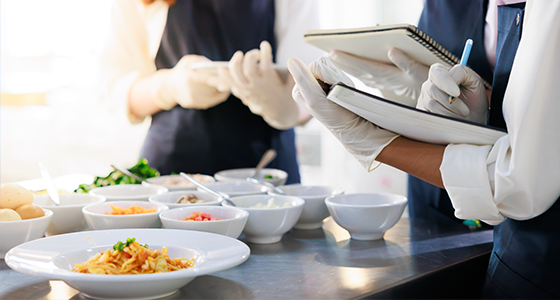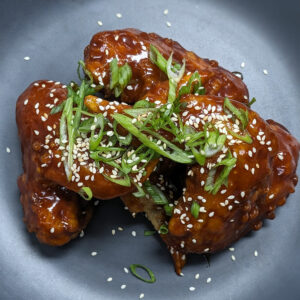According to the Centers for Disease Control (CDC), nearly twenty percent of foodborne illnesses are caused by poor food safety. In real-world numbers, that’s approximately 3,000 deaths in the U.S. annually. No commercial kitchen operator wants to be the source of an illness outbreak. There are several steps you can take to minimize the risk. Check out these food safety tips to ensure your kitchen stays safe for your customers, your employees, and your bottom line.
Maintaining clean and safe conditions for your food prep areas is critically important. Salmonella and other dangerous bacteria cause serious illness. Knowing how to ace health department inspections ensures you can operate a safe and clean kitchen. Additionally, it gives the operator peace of mind.
Commercial and industrial kitchens can be very hectic, making it challenging to ensure that everything is done properly. But following these ten safety tips will protect the health and safety of your customers and staff.
Washing Hand
The simplest food safety tip is also the most important. Wash your dang hands. This means providing a dedicated hand washing station for your staff in a commercial kitchen. This minimizes cross-contamination. Even trace amounts of bacteria can sicken someone, so hand washing is a priority. Soapy hands should be washed for at least 20 seconds under running water. Make it easy for your team by recommending they sing the Alphabet song or Happy Birthday in their heads while washing their hands.

Stay Home When Sick
This is another no-brainer, but it continues to be an issue. The CDC’s National Center for Environmental Health (NCEH) surveyed nearly 500 food workers. The results showed that five percent of workers admitted to preparing food while they were suffering from vomiting or diarrhea. Doing so puts their customers’ health at risk. Gastrointestinal illnesses, such as Norovirus and E. coli, are incredibly contagious. It takes as few as 18 viral particles to make someone sick. And many contagions can survive the cooking process.
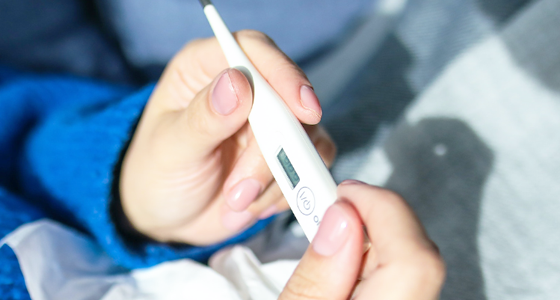
Allowing sick workers to be present in your operation puts all your customers and staff at risk. Offering sick pay to workers indeed carries a cost. But removing the financial pressure for workers to “power through” an illness can protect your business and reputation. And in these days of chronic labor shortage, including a sick pay benefit can be another incentive for folks to join your team.
Use Gloves, But Use Them Right
Workers should be wearing kitchen gloves when preparing food. This food safety tip is a tricky one because they need to understand that they can’t use the same gloves for every ingredient. Gloves must be changed when moving from raw meat and poultry to cooked food. Failure to do so can spread contaminants to the customer’s food, leading to food poisoning. Providing an ample supply of gloves for your workers is important. Training staff on proper glove use is time well spent.

Washing Food Properly
Make sure fruits and vegetables are washed. Even produce that will be peeled or skinned must be washed. Not doing so risks spreading bacteria from the outside of the product to the inside. Fruits and vegetables should be washed under cold running water. To add an extra layer of safety, use an FDA-approved fruit and vegetable rinse. Check with your health department to see which options are recommended in your area.

It's All About the Temperature
Food temperature is absolutely the most important factor in food safety. Assuring that food transitions quickly through the temperature danger zone (40°F to 140°F) is paramount. Likewise, it’s important to know all proteins’ minimum safe internal temperature. The Food Safety and Inspection Service (FSIS) sets the standards for beef, pork, poultry, and seafood. When reheating cooked food, it is important to reach a minimum of 165°F. Care should also be taken when verifying food temperatures so that thermometers don’t inadvertently cross contaminates.

If cooked food is to be held hot, it’s equally important to verify that food temperature doesn’t drop into the danger zone.
Winston’s CVap® technology is an industry leader when it comes to safe food temperatures. CVap’s unique dual-heat system is designed to help food transition quickly through the temperature danger zone. Once the desired doneness temperature is achieved, CVap can maintain food at the desired temperature for an extended period without sacrificing food quality. It truly is a game changer.
Implementing and maintaining a HACCP (Hazard Analysis and Critical Control Point) plan is advisable. This is a plan with a preventative approach to food safety. www.fda.gov
Avoid Cross-Contamination
Naturally, many foodborne illnesses arise from accidental cross-contamination, where bacteria are spread from raw meat or poultry to other foods. Utilize separate cutting boards for raw produce, meat, poultry, seafood, and eggs. Consider labeling each board with its intended purpose or use a color-coded system. Be sure to keep boards separate from one another. Likewise, use separate utensils and meat thermometers.

Stay Cool and Separate
Refrigeration and freezing are the primary methods for storing foods. Raw meat and poultry should be kept separate from other foods, especially vegetables, prepared sauces, and anything else that requires little preparation. The FDA advises that food should be cooled to 41°F or below and cooled in a way that provides ventilation, so air can circulate around the food. Make sure meat doesn’t drip and contaminate other food. Cut vegetables should never be left out at room temperature but properly stored away. Never store food on the floor either, and have a thermometer in the refrigerator, not just the freezer.
As stated before, it’s important for food to quickly transition through the danger zone when cooking. It’s just as important for food to cool quickly, to pass through the zone in as little time as possible. Blast chillers are optimal for this, but not every commercial kitchen has one. It’s advisable to store food in shallow containers rather than large vessels to increase the exposed food surface and allow more heat to dissipate. Another option is to place food containers in an ice bath, which will facilitate the chilling effect.
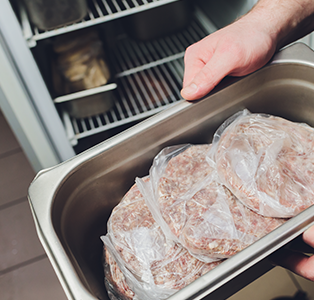
It’s important to understand the role of cold storage and food safety. Refrigeration does not stop bacteria from reproducing but does slow it down. That’s why keeping track of how long a product has been refrigerated is important. Once it’s outside the safe window, it should be discarded.
Freezing, on the other hand, stops bacterial growth. However, bacteria are still present in frozen food. Once thawed, all relevant safety protocols must still be followed.
Although food temperature requirements vary, it’s a good rule of thumb to consider any food that has been in the danger zone for more than four hours to be unsafe and thrown away.
Clean and Sanitize Prep Surfaces and Equipment
Your staff needs a proper workstation and equipment to do their job. Use hot soapy water or a small amount of commercial bleach or cleaner on cutting boards, dishes, countertops, etc. It’s equally important to keep your equipment clean. Follow the manufacturer’s recommendations when it comes to cleaning and sanitizing ovens, holding cabinets, grills, and other commercial equipment.
As is the case with many food safety factors, it’s advisable to check with your health department for specific recommendations.



Label Food
The mantra with food is FIFO (First In, First Out). Label food with its arrival date and expiration date, and make sure stock is rotated so that the older stock is used first. Be aware of expiration dates and follow them. The golden rule is “if in doubt, throw it out.” Saving a few pennies by using expired products can cost you dearly if it causes an outbreak of foodborne illness.
Staff Training
Your operation is only as good as your staff. That makes it critical to properly train your staff in all aspects of food safety. Failure to train can lead to shortcuts and a lack of awareness, increasing the risk of your customers getting sick. Each new staff member must be properly trained, both in what to do and what not to do.
An excellent source for food safety is FoodSafety.gov. You can keep up with any food safety recalls, cooking tips and other important information.
